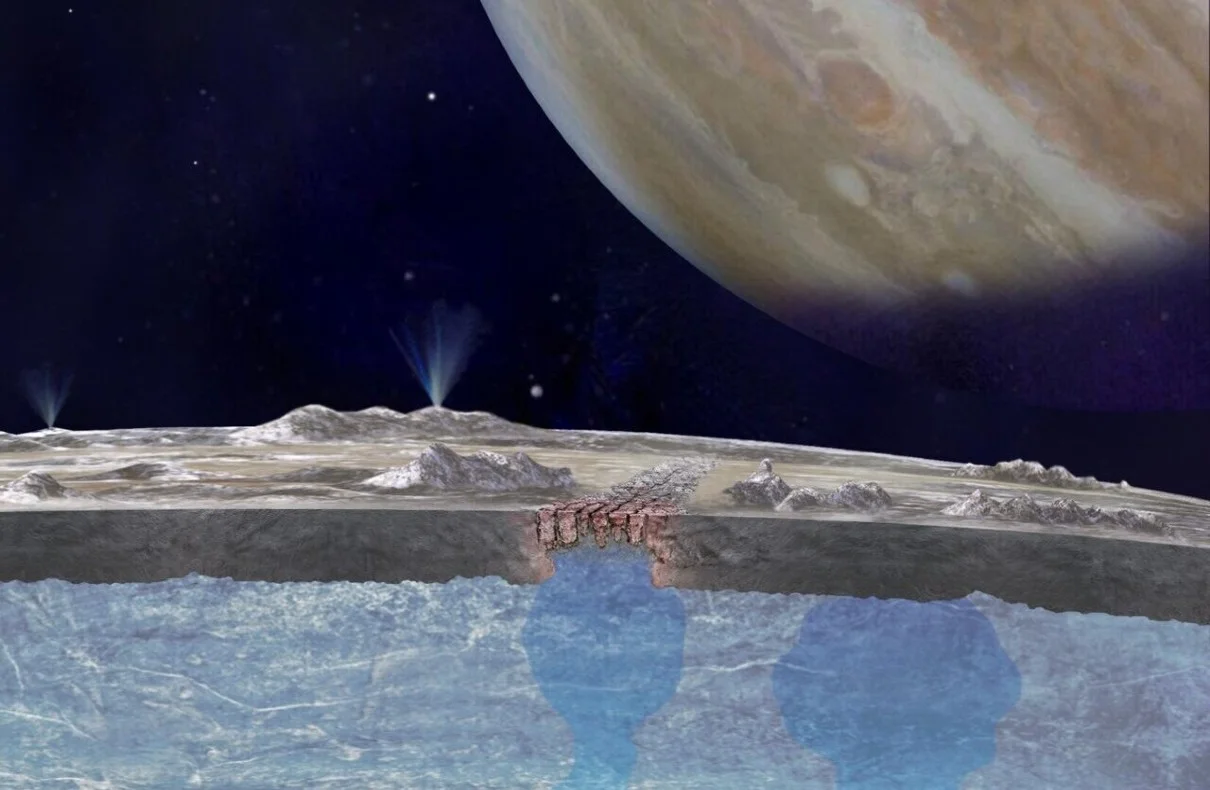There are still six years to go, but by 2030 humanity could have a clearer idea of whether there is life beyond Earth. Jupiter’s moon Europa has been the subject of much speculation over the past few years. Now the National Aeronautics and Space Administration (NASA) wants to send the Clipper space probe to determine whether Europa contains an ocean of saltwater beneath its ice shell and whether the conditions necessary for life are met.
The Clipper Project
Next October, NASA hopes to launch its Europa Clipper space probe, an artifact whose objective is not to observe the moon itself, but what lies beneath: an ocean of liquid salt water with the potential for life like on Earth. Or at least that is what is believed to be hidden there.
Equipped with a battery of nine scientific instruments, Clipper will approach Europa in a series of nearly 50 flights “at closest approach altitudes as low as 25 kilometers (16 miles) above the surface, flying over a different location during each flyby to examine nearly the entire moon” above the ice.
It will remotely investigate the possibility of any chemical composition supporting life. Clipper might potentially find bacteria if water from that ocean breaks through the ice vents and reaches space.
The primary scientific objectives of the mission are to comprehend the composition and geology of the moon, the nature of the ocean beneath the ice sheet, and the ice sheet itself, according to NASA.
“Our mission is not to hunt for lives. According to statements made public by Science, the news source, “We’re a habitability mission,” stated Robert Pappalardo, Clipper project scientist at the Jet Propulsion Laboratory (JPL), which oversees the operation.
Clipper is no ordinary spacecraft. It is NASA’s most expensive planetary science venture since the $5 billion Cassini-Huygens mission to Saturn in the late 1990s. It is also NASA’s largest planetary mission spacecraft, prepared for a harsh radiation environment such as Jupiter’s magnetic field.
Europe, an oceanic world
For more than half a century, the focus was on Mars, the red planet, also seen as a rocky desert. Now, the focus is on Europa, a moon consisting of silicate rocks and a crust of ice and water, with a surface full of cracks and striations . Its atmosphere is thin, composed of oxygen. It is, in other words, a “frozen world,” notes a National Geographic publication, due to its distance from the Sun, more than five times that of the Earth. In size, however, it is smaller than the Moon.
By targeting an oceanic world beyond the Sun’s traditional habitable zone, Clipper represents a radical change in the search for life. The James Webb Space Telescope has already found samples of water beneath the ice surface in its most recent observations, identifying carbon dioxide coming from that region.
If Europa is found to be capable of hosting biological traces, it would open up new frontiers in the search for extraterrestrial life, in the Solar System and beyond.
“We’re going to do something that’s never been done before,” Margaret Kivelson, a space physicist at the University of California, Los Angeles and a member of the Clipper mission team, told Science.
“Europa shows strong evidence that a liquid water ocean exists beneath its icy crust. Beyond Earth, Europa is considered one of the most promising places where we might find currently habitable environments in our solar system. Europa Clipper will determine whether there are places beneath Europa’s surface that could support life,” NASA stresses.
